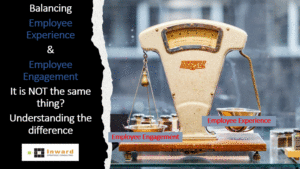Harvard Business Review says, “Purpose-driven companies make more money, have more engaged employees, and loyal customers. They are better at innovation and transformational change.”
Does brand purpose drive value? The simple answer is yes!
At Inward, we have been promoting the concept of Brand Purpose for over three years. In these few years, we have seen its benefits in every client engagement. It improves customer experiences and their trust in our company. Along with this, it also enhances employee productivity and the ROI of the business.
There are numerous studies such as the Porter Novelli Purpose Premium Index, and Cone Purpose Collaborative on the B2B Purpose Paradox that are reporting the same findings.
The bottom-line impact is real. Over the past 10 years, brands with meaning have outperformed the stock market by up to 206% and purpose can increase shareholder value by $1 billion. According to a 15-year study by the S&P 500 moreover, 83% of the companies that over-perform on revenue growth link everything they do to purpose.
I recently read an interesting report that explored the concept of “purposed premium “. The report commissioned by Monitor Deloitte; identified six drivers of corporate value creation when companies integrate purpose into their core business strategy. These six drivers are
- brand and reputation;
- sales and innovation;
- capital access;
- operation efficiencies;
- talents; and
- risk mitigation.
Purpose-related efforts can guide strategic choices, and allocate resources accordingly to create value creation. The report also suggests that it measures the business value both qualitatively and quantitatively.
What does this mean?
An integrated purpose strategy focuses on a differentiated role a company serves in society and can provide organizations with a purpose premium driving long-term value in creating competitive advantage.


What are the top three things that companies can do to promote a purpose-driven culture and create a purpose premium and value for the company?
- Get your senior leadership team to collaborate, articulate, and clarify what your brand purpose is. We suggest bringing in an outside agency like Inward to help facilitate this discussion to a codified framework and process. The team has to reach deep into its core and ask, “What matters in driving their business future? What is the emotional connection to their employees, customers, and stakeholders?”.
We see reports and articulations of purpose to include social justice, the environment, and saving the community. While these ideas are noteworthy, in my opinion, they do not define real brand purpose.
Purpose is the differentiated role it serves for its employees, customers, and stakeholders (shareholders suppliers, resellers, communities, and vendors). When employees, customers, and stakeholders share a common purpose real differentiation, the shared passion and enthusiasm come alive. It is not PR or a cause-related activity simply to mitigate risk or to protect the reputation. It is the answer to the question, “Why do you exist?”.
- For Dove soap company, it means bringing out the inner beauty of its customers.
- For Subaru, it means “everything that they do from design, engineering to manufacturing starts with love and safety”.
- For Caterpillar, it is “to place 50 million people on the path to prosperity by investing in basic human needs, education, and the environment”.
It shouldn’t be complicated or complex but rather simple.
My friend Paul Higham, a former CMO at Walmart used to promote the idea to his employees, “Hard, Simple, Easy” – you need to work hard to take the complexity out of the business so that the business becomes simple to understand and embrace in layman’s terms. When it’s simple it becomes easy to communicate and implement into everyday activities and becomes the norm and habitual.
- After your brand purpose is articulated it needs to be incorporated in every corporate role and activity across the enterprise.
What is the consequence of your purpose on product design and development, manufacturing efficiencies, talent recruitment, sales and distribution, public relations, advertising, etc.?
It must be disseminated and understood by every single employee so that they feel comfortable becoming brand champions and advocates. Everyone must understand how the brand purpose drives performance in the corporate strategy. They should learn how the purpose impacts performance and day-to-day activities. Purpose should be the driver behind individual performance appraisals and feedback as well as business drivers of performance. It is not a slogan that sits on posters and walls.
- The brand purposes should be supported by an internal integrated change management communications program. It includes
- social media,
- onboarding/training programs,
- incentive recognition and rewards, as well as
- external communications through community outreach, digital branding, public relations, and advertising.
It should not be an item on a checklist that gets produced and forgotten. Also, it must be a sustainable long-term initiative that evolves and receives maximum internal exposure.
One of my pet peeves is that CMOs allocate fewer resources and less money to internal brand communications programs than external programs. They fail to realize that before your customers can experience the brand, their employees must understand and exhibit customer-facing behavior and experiences. This is especially the case in the retail environment.
Walmart understands this phenomenon extremely well. We were privileged to have been one of their employee communication agency partners for several years to help employees understand the impact of “Save Money Live Better”. We translated this into an internal behavioral rallying cry of “Everyday Low Prices Starts with Me”, and an internal integrated communications program using our Inward Dialogue Marketing Framework so that customers can save money and the better every day. (I’d be happy to share examples of that case history if you would like).
Don’t under-allocate resources or efforts to promote purpose to your internal stakeholders.

































